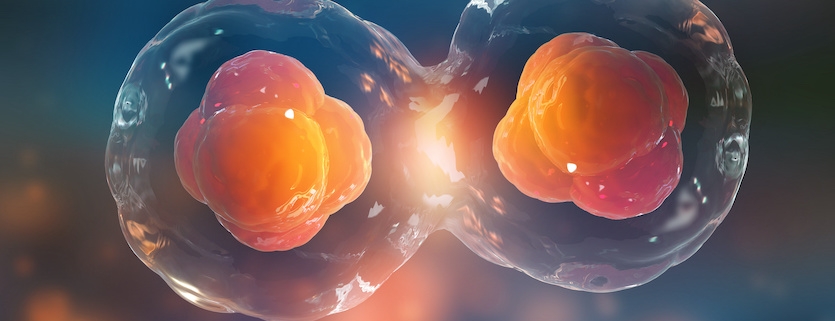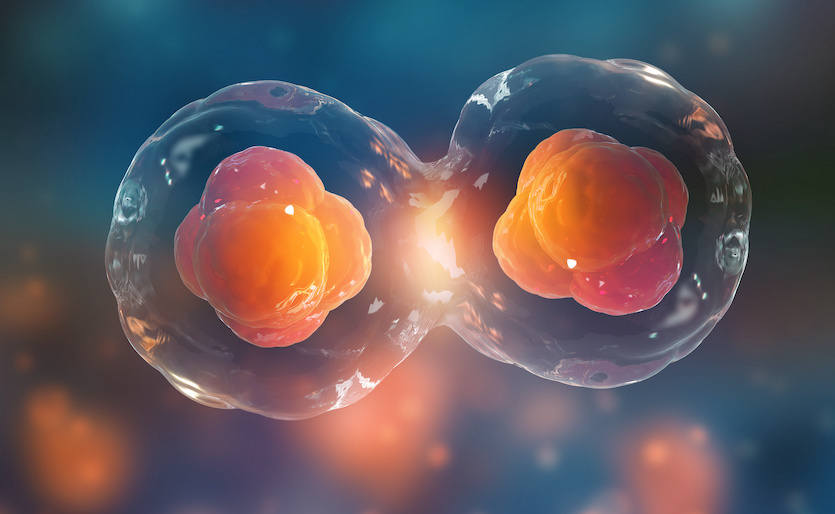Explaining Aging Cells—What Causes Cellular Aging
Growing older is a natural phase of life. It follows then that as you age, your cells age, too. And in fact, cellular aging is a simple fact of biology, but one that needn’t be shrouded in mystery.
Cellular aging mechanisms are in place from the day you are born. As cells divide, multiply, and perform their designated functions, they age. And as they age, your body has in place remarkable ways to take care of aging cells and replenish them with new ones.
So, what causes cell aging anyway? Here are some of the most common triggers of cell aging:
- DNA damage
- Oxidative stress (from internal and external sources)
- Decline in autophagy
It’s important to remember that your aging body and older cells aren’t something to shy away from. You aren’t only getting older; your body is signaling to the world what a wonderful life you have lived.
And as for your cells—aging is just another period in their much more microscopic lifecycle. Show your older cells some deference and learn more about their unique aging process.
Cellular Aging—Definitions and Mechanisms
In scientific literature, aging is referred to as senescence. Cellular senescence, specifically, is the process of cellular aging. A senescent cell is generally larger than its non-senescent counterparts. Senescent cells no longer divide in an effort to protect themselves and the tissue surrounding them from inaccurate or harmful replication errors. The process by which a replicating cell transforms into a non-dividing senescent cell takes about six weeks to complete.
DNA replication is at the heart of cellular senescence. In order to maintain healthy, functional tissues and organs, the cells involved need to replicate without error. Your body has natural triggers in place to manage when older cells become senescent and no longer replicate. Aging triggers come from within the senescent cell and the environment around them.
You already read about the three common causes of cell aging, now it’s time to dive deeper into each one.
DNA Damage
New cells don’t need to worry too much about damage to their DNA. The chromosomes that store all your unique genetic information are capped with sections of repeating genetic code that signifies the end of a chromosome. These chromosome caps are called telomeres and they help maintain reliabil and accuracy during DNA replication.
But with each cycle of replication—every time a cell divides, and as the cell ages—a small percentage of the genetic code is lost, and the telomere caps shorten. As the cell ages and telomeres shorten, the cell is more likely to experience damage to its DNA or incorrect replication.
To preserve the integrity of your genetic code the telomeres at the ends of each chromosome signal when it’s time for the cell to stop replicating. Without the telomere caps, gene transcription and cell division would continue indefinitely—leading to a potentially dangerous accumulation of poorly made cells. Your cells rely on telomeres to know when it’s time to retire.
Oxidative Stress
This is another event that triggers cell aging. And oxidative stress can also halt cell replication. Reactive oxygen species in the cell’s environment are fodder for DNA replication mishaps. They can lead to mutations in cell’s genetic code that may affect the function and health of the cell over time.
When reactive oxygen species are detected in the cell’s environment, replication stops in order to preserve the integrity of the cell’s DNA. Aging cells that stop replicating in the presence of reactive oxygen species are protecting your body from incorrect cell proliferation and mistakes in gene transcription.
Decline in Autophagy
Kudos to you if you can recall the definition of this scientific term. Autophagy literally means “self-eat.” And this simple phrase perfectly describes how autophagy is used by cells. As cells age, their organelles (cell parts) and cellular equipment begin to fail. Waste can build up, and it needs to be cleared away. Autophagy is the cell’s way of destroying used and broken parts through a process of self-digestion.
Specialized organelles inside your cells collect damaged cellular material and break it down. These organelles are called lysosomes. They are full of digestive enzymes that eliminate the junk that can build up in your cells.
A cell’s ability to perform autophagy dwindles with age, creating a struggle to clean house when broken-down organelles and waste pile up. This can lead to an accumulation of proteins within the aging cell and may trigger problems with DNA replication down the line.
When a cell can no longer manage the buildup of waste within its cell membrane, it stops dividing and triggers senescence.
Apoptosis vs Cellular Senescence
If you research cell aging long enough, you’ll likely come across a phenomenon called apoptosis. This cellular process is easily confused with senescence, so let’s clear the air on the circumstances that lead to each.
Like you’ve read above, cellular senescence is the end of cell division for the aging cell. A senescent cell continues to perform its original function, but it no longer replicates—to avoid mistakes in genetic transcription. Aging cells aren’t dead cells, but they are less productive and efficient than younger, replicating cells.
Apoptosis is essentially programmed cell death. Sometimes during DNA replication, a cell can stray far from its prescribed course. Uncontrollable replication can lead to abnormal cell growth, a potentially harmful buildup of poorly manufactured cell copies. To stop this overgrowth dead in its tracks, cells have a special self-destruct protocol they can follow.
Older cells are more likely to apoptose, but that doesn’t necessarily mean all senescent cells are headed for immediate self-destruction. When apoptosis is triggered, the cell releases proteins that neatly pack up all the inner workings of the cell and cause it to lyse (pop). Apoptosis isn’t messy, and cells undergoing apoptosis don’t harm their neighboring healthy cells.
In summary, cellular senescence stops cell division and apoptosis occurs when an aging cell can’t stop dividing. Hopefully this interlude clears up some of the confusion surrounding the topic of cell aging.
Healthy Living and Cellular Aging
Aging cells are a fact of life. As your cells age, your body replaces them with young, high-performing cells to take over when older cells retire. No matter the stage of your life or your cell’s lifecycle, you can promote cellular and whole-body wellness with healthy living.
Cellular senescence is unavoidable, but you can protect healthy cells from entering retirement too early. Some activities can shorten telomeres and trigger premature cell aging. Do your best to avoid these:
- Sunburns
- Tanning beds
- Smoking
- Drug abuse
- Obesity
- Excess stress
These habits have been shown to elevate oxidative stress from reactive oxygen species—especially tanning and sunburn. And as you know, reactive oxygen species are one of the triggers of cellular senescence.
One way to protect your cells and support them as they age is by maintaining good cellular health habits. You know how much healthy habits help you feel your best. There are lifestyle and diet choices that can optimize cellular your health, too. Take a minute to review four key habits and learn how to keep your cells healthy.
And remember, aging bodies and aging cells are natural. This latter period of life is meant to be enjoyed. So celebrate aging bodies and aging cells with gratitude and respect for all they’ve accomplished. Pay respect to your body as you and your cells age by avoiding the triggers of cellular aging and supporting healthy cells with a diet rich in antioxidants and other cell-supporting habits.
References
https://embryo.asu.edu/pages/telomeres-and-telomerase-cellular-aging-senescence
http://www.scielo.br/j/babt/a/JwhY4xGwV4VDqnWJKcZWp4x/?lang=en
https://www.nature.com/scitable/topicpage/aging-and-cell-division-14230076/
https://www.sciencedirect.com/topics/immunology-and-microbiology/cell-aging
https://link.springer.com/referenceworkentry/10.1007%2F978-0-387-33754-8_81
https://www.cell.com/fulltext/S0092-8674(05)00101-7
https://www.genome.gov/genetics-glossary/apoptosis
https://www.ncbi.nlm.nih.gov/pmc/articles/PMC3370421/
https://www.ncbi.nlm.nih.gov/pmc/articles/PMC4678010/
https://socratic.org/questions/what-is-the-connection-between-senescence-and-apoptosis
https://www.frontiersin.org/articles/10.3389/fendo.2018.00790/full













